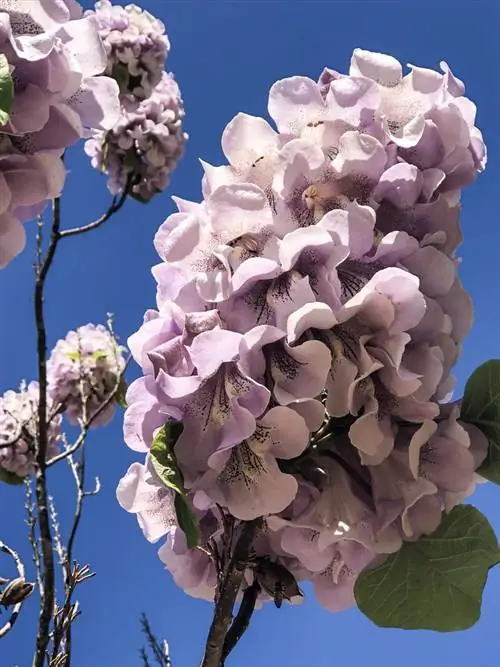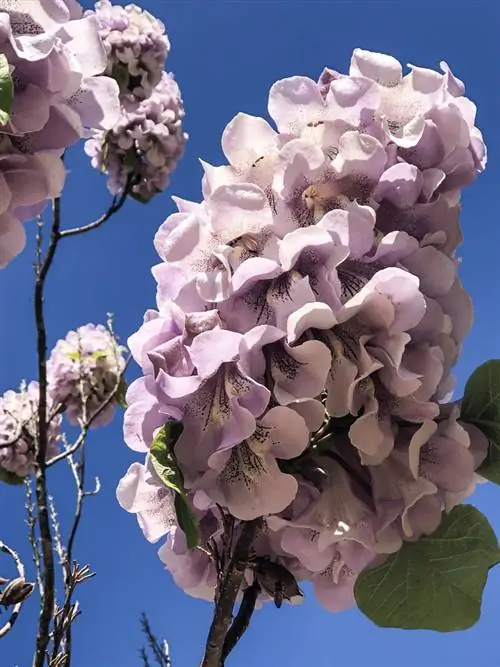- Author admin [email protected].
- Public 2023-12-16 16:46.
- Last modified 2025-01-23 11:21.
Strictly speaking, the name Paulownia is the name of a genus of plants from the bluebell family. The most famous species is probably the Paulownia tomentosa, the (Chinese) bluebell tree, it is also called the emperor tree.

What types of Paulownia are there?
There are several species of Paulownia, including Paulownia tomentosa (bluebell tree), Paulownia fargesii, Paulownia fortunei, Paulownia catalpifolia and Paulownia elongata. Flower colors range from white to light blue to purple, and they each have different growth and care requirements.
Around seven species of Paulownia are known, and there are also some hybrids that were either created through natural crossings or through special breeding. Here the breeders wanted to breed desired properties, for example to improve the quality of the wood and/or increase frost tolerance. Not all species are equally suitable for the private garden.
What characterizes a paulownia?
Most types of Paulownia are considered to grow quite quickly, with the only exception being Paulownia catalpifolia. Their flowers are mostly light purple and the wood quality is very good. However, you will rarely find this tree in stores.
As the name suggests, the flowers of the bluebell tree are blue or purple and bell-shaped. They sit on panicles up to 40 centimeters long. In other types of Paulownia, the flower colors vary from white to light blue to violet, and the size of the flowers and panicles are also different.
How do I care for a paulownia?
Caring for a paulownia is not complicated, provided you live in a mild area without harsh winter frosts. Otherwise the tree will survive the winter, but not its buds. Therefore, you cannot reliably count on regular flowering. The Paulownia needs a warm and bright location.
Gardenically interesting types of Paulownia:
- Paulownia tomentosa (bluebell tree): most commonly offered species, approx. 5 cm long light purple flowers in up to 40 cm long panicles
- Paulownia fargesii: flowers white to light blue, unlobed leaves
- Paulownia fortinei: up to 20 m high, 10 cm long cream-colored flowers, up to 10 cm long fruit capsules
- Paulownia catalpifolia: rarely offered, slow growing, up to 15 m high, very good wood quality, flowers mostly light purple
- Paulownia elongata: up to 12 m high, sensitive to wind, light purple to violet flowers in panicles up to 35 cm long
Tip
Although an older bluebell tree is hardy, young shoots and buds tolerate cold very poorly and tend to freeze.






